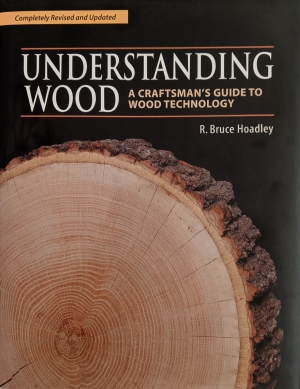
The first book I chose to read for my Woodworking Book of the Month Series is a woodworking reference book that simply can’t be overlooked. The first of many woodworking books that I’ll read and review is Understanding Wood: A Craftsman’s Guide to Wood Technology by R. Bruce Hoadley.
What the Book is About
This book is jam packed with information, focusing primarily on wood, the raw material used by all woodworkers to build. As the title indicates, the book’s focus is really about understanding wood: how it grows, how it moves, how the way it’s cut and dried affects it and causes dimensional changes or how significant humidity is in the seasonal cycle of lumber.
Essentially, the book starts at the growth of the tree, explaining the rings, heartwood vs. sapwood, as well as the cell structure. It talks about how knots and other defects develop in trees and how these can later affect your project when working with lumber containing these defects. The author also goes into detail about various properties of wood, such as strength, density, conductivity and eventually the most important topic: water & wood.
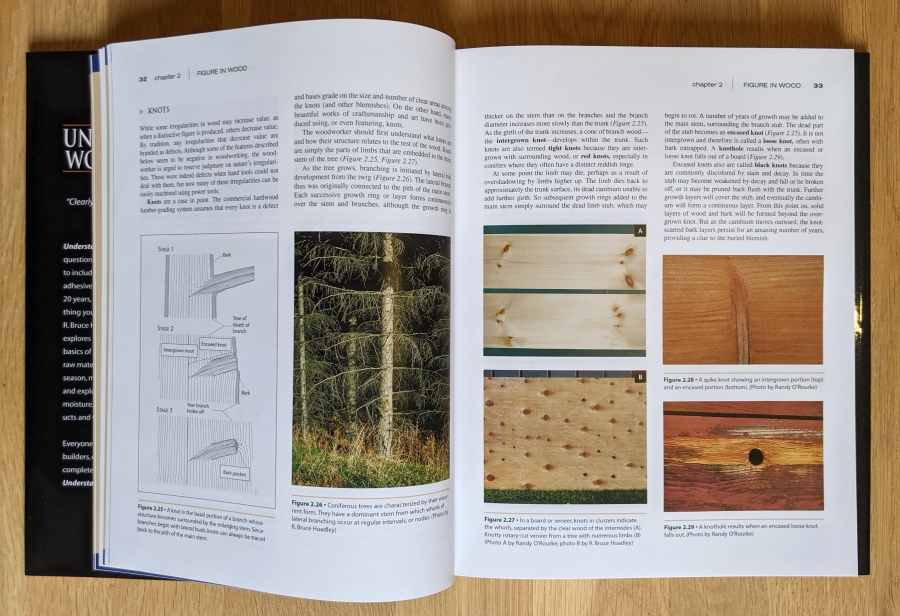
The second half of the book focuses on the most crucial aspect to woodworkers: wood movement caused by changes in moisture content. Chapters 6 through 8 explore how wood shrinks and swells, how humidity and temperature affect this, and how wood is dried and should be stored. It also discusses the implication of wood movement on furniture building and what considerations should be taken to account for dimensional changes in lumber.
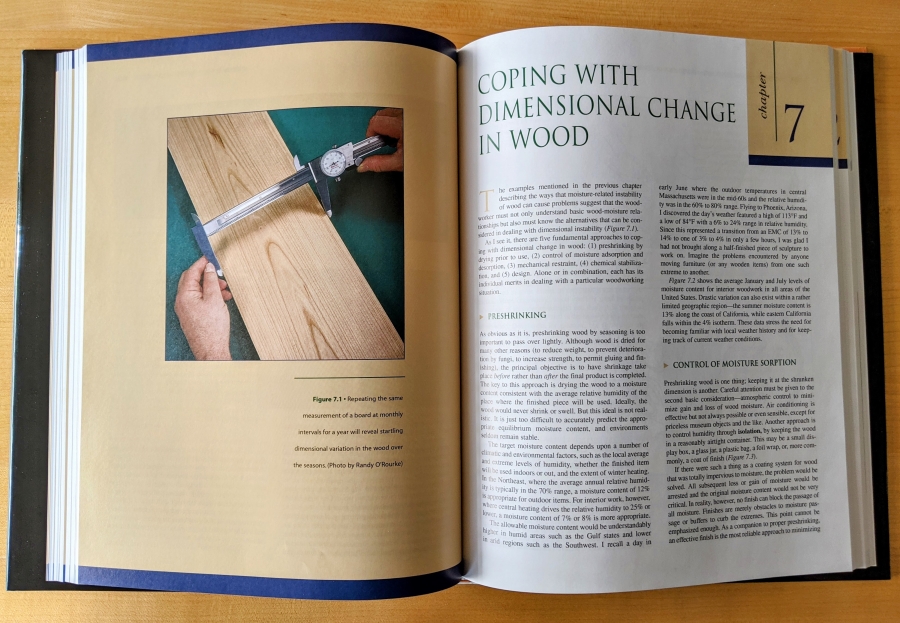
The last section of the book touches upon types of finishes (film vs penetrating), an overview of how wood is cut into lumber at the sawmill, as well as an overview of wood grading and types of plywood and other sheet goods. These last chapters are more of a quick intro into each subject, rather than a deep exploration like in the previous sections of the book.
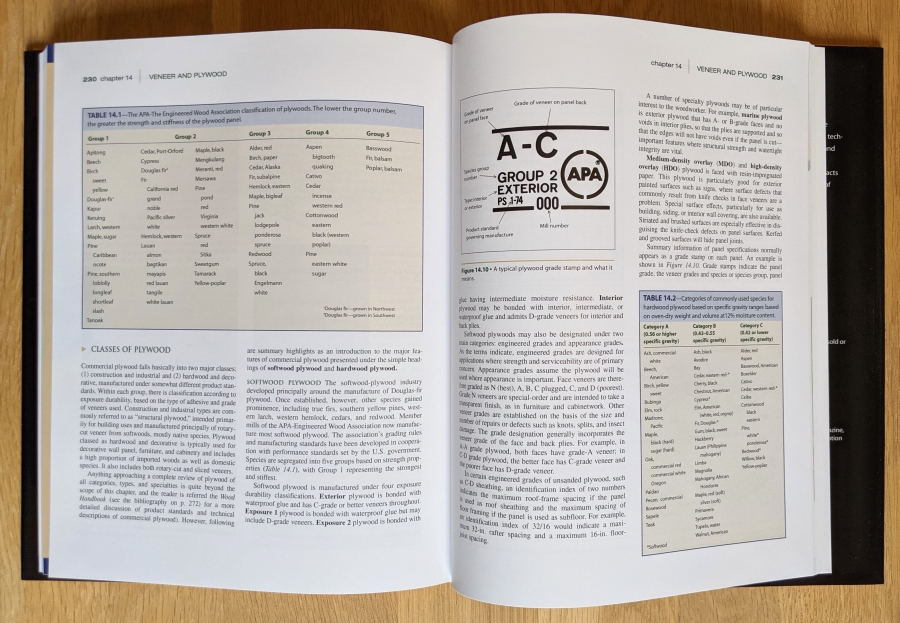
Understanding Wood Book Review
What I Liked About the Book
Although this book is definitely not a light read, if you have a curious mind like I do and love to learn, this book is full of information about wood, written by a master of the subject. There is no doubt that R. Bruce Hoadley knew his stuff and wasn’t only talking from experience, but also from fact-based scientifically proven data.
They say a picture is worth a thousand words, and while I don’t know if that’s true, pictures definitely help to understand concepts, especially if you are a visual person. The author included numerous pictures, sketches and graphs in this book which are tremendously valuable in absorbing the information being presented.
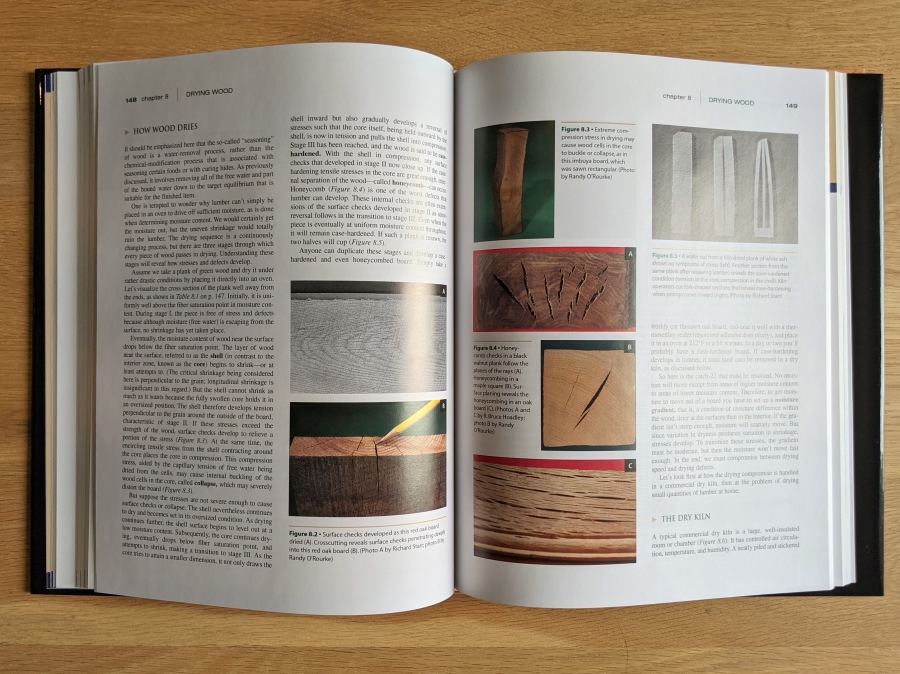
The book really started to get interesting for me at chapter 6 which is all about moisture and the impact of temperature changes on relative humidity, and how wood reacts to these changes. It was also interesting to see the difference in dimensional change depending on the plane of the wood (radial vs. tangential) and how the tree was sawn (flat-grain vs quarter sawn). For anyone interested in drying their own lumber, chapter 8 has some great practical advice on this.
What I Didn’t Like About the Book
First off, I feel like you should know what you’re getting into if you choose to read this book. Be prepared to read a textbook about wood that uses a scientific and mathematical approach, with a good dose of biology mixed in, and a little chemistry too. The book is also littered with formulas, graphs and numeric reference charts.
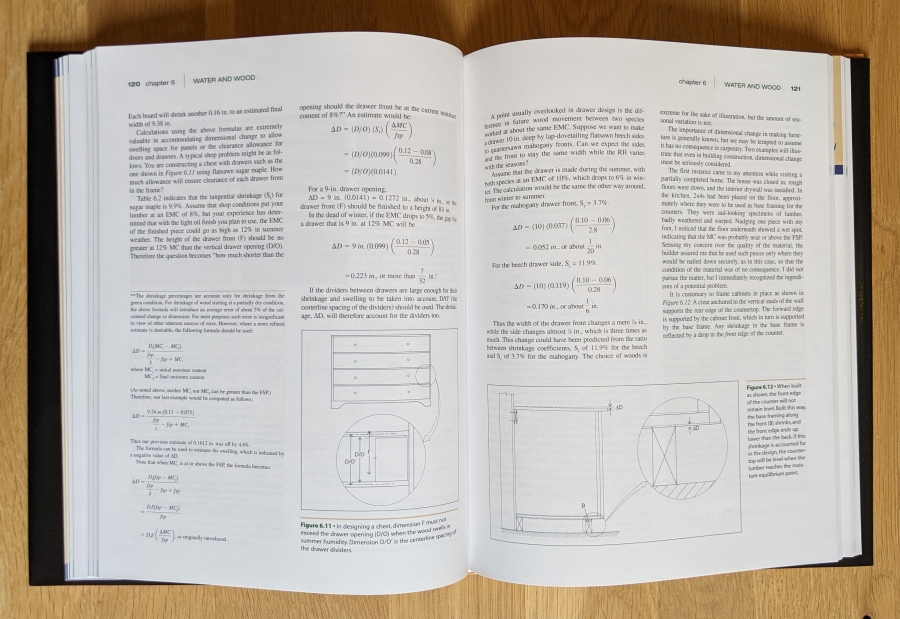
The book is dense with theory about wood, but lacks practical information for the average woodworker. Each time I read about an interesting concept or property of wood and the challenges it presented to the woodworker, I was ultimately left with one unanswered question: What do I do with this information?
- One good example, and I got a little irritated by this, is the part where the author suggests that I make my own polyethylene glycol (PEG) solution to stabilize wood and build my own thermostatically controlled vat to store my lumber, hence stabilizing it and protecting it from movement. Not something one can realistically undertake in the home woodshop.
- Another good example is the whole chapter about identifying wood species, but which can’t be done without the use of a microscope. I get it, but it still would have been nice to include some tips on identifying the most common types of wood for the woodworking hobbyist. Instead I simply skipped over the chapter, utterly disappointed.
I wanted to like this book. Trust me, I really did. Sadly, it left me feeling like I was back at University, studying for an exam, and while I learned a lot of valuable concepts, I wouldn’t know what to do with them once I go out into the real world.
Book Review: The Verdict
As you may have gathered by now, I have a lot of reservations about this book. The truth is that I struggled to get through the whole thing, but kept reading in the hopes that the next chapter might bring the practical insights I was looking for. My optimism was unfortunately not rewarded. It was tedious pretty much the whole way through.
I honestly can’t understand how this book got so many 5-star reviews on Amazon. Don’t get me wrong, there is a lot of value in this book. However, the book lacks practical information and isn’t easy to digest. In fact, as I read through, I kept wondering how many readers actually had the necessary scientific background to be able to truly appreciate and understand what was being presented?
I came across an Amazon review that pretty much sums up my thoughts about this book: “Imagine if your college engineering, calculus and biology professors got together to write a book”.
Here are the Main Pros and Cons of This Book:
Pros
- Complete in-depth reference book about wood
- Chock-full of valuable information for woodworkers of all levels
- Very detailed and information is based on scientific facts
Cons
- Very technical and scientific approach (full of formulas and charts)
- Reads more like an advanced textbook
- Very theoretical & lacks practical information
- Rather expensive book to purchase
Regrettably, I wish my first Woodworking Book of the Month Review had left a better impression on me. My goal is actually to encourage you to read along with me, not to turn you off from woodworking books completely! I really believe that, even in this digital/video era, there is still value to be found in woodworking reference works.
The next book I’ll be reading was written by a woodworker and fellow YouTuber you are likely all familiar with: Marc Spagnuolo, aka The Wood Whisperer. Next month, I’ll be reading his most recent book: Essential Joinery. You can read the book review here.
